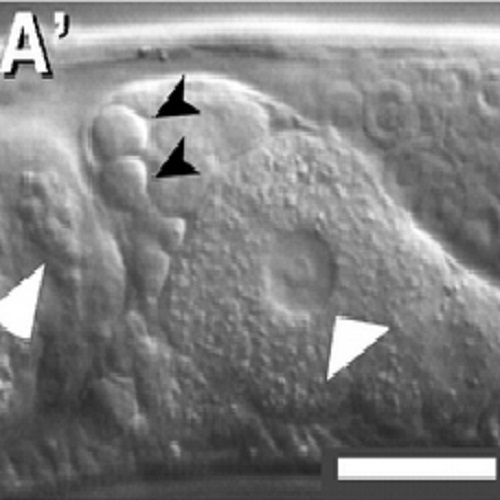The Caenorhabditis elegans Ste20 kinase, GCK-3, is essential for postembryonic developmental timing and regulates meiotic chromosome segregation.
Ste20 kinases constitute a large family of serine/threonine kinases with a plethora of biological functions. Members of the GCK-VI subfamily have been identified as important regulators of osmohomeostasis across species functioning upstream of ion channels. Although the expression of the two highly similar mammalian GCK-VI kinases is eminent in a wide variety of tissues, which includes also the testis, their potential roles in development remain elusive. Caenorhabditis elegans contains a single ancestral ortholog termed GCK-3. Here, we report a comprehensive analysis of gck-3 function and demonstrate its requirement for several developmental processes independent of ion homeostasis, i.e., larval progression, vulva, and germ line formation. Consistent with a wide range of gck-3 function we find that endogenous GCK-3 is expressed ubiquitously. The serine/threonine kinase activity of GCK-3, but not its presumed C-terminal substrate interaction domain, is essential for gck-3 gene function. Although expressed in female germ cells, we find GCK-3 progressively accumulating during spermatogenesis where it promotes the first meiotic cell division and facilitates faithful chromosome segregation. In particular, we find that different levels of gck-3 activity appear to be important for various aspects of germ line development. Taken together, our findings suggest that members of the GCK-VI kinase subfamily may act as key regulators of many developmental processes and that this newly described role in meiotic progression might be conserved and an important part of sexual reproduction.

- Dev. Biol. 2010 Aug 15;344(2):758-71
- 2010
- Developmental Biology
- 20595048
- PubMed
Enabled by:
